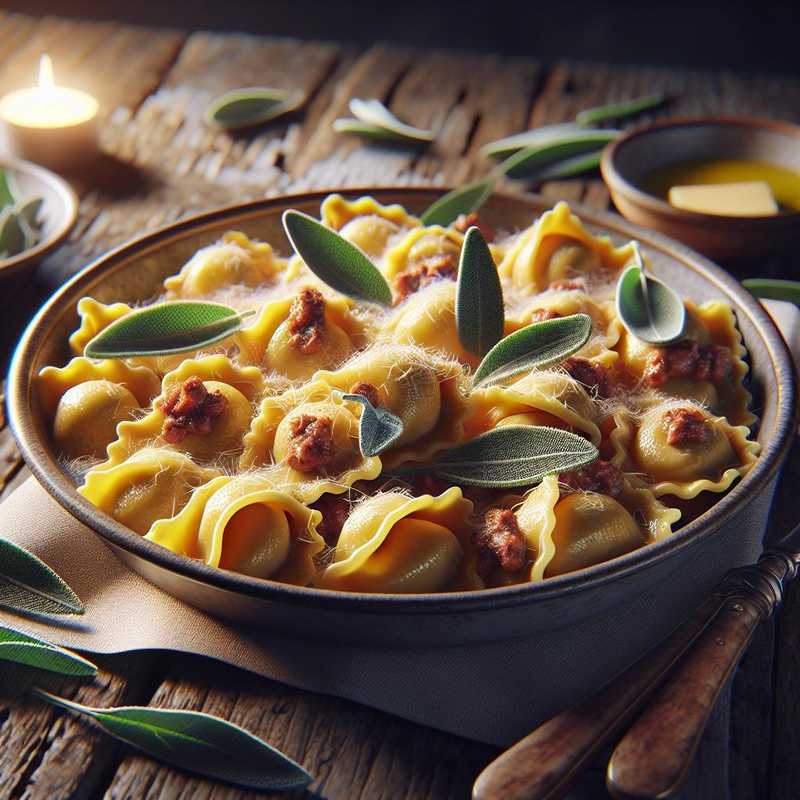Casoncelli
17/11/2023Casoncelli are a typical dish of Lombard cuisine, particularly from the area of Bergamo. These half-moon-shaped ravioli are stuffed with a mixture of meat and aromatics, and are served with melted butter, sage, and often garnished with crispy pancetta. Here is a traditional recipe:
Ingredients
-
For the pasta:
- 400 g of flour
- 4 eggs
-
For the filling:
- 150 g of beef
- 100 g of stale bread
- 50 g of grated Parmesan cheese
- 1 egg
- 50 g of raisins
- 50 g of amaretti cookies
- Nutmeg
- Salt and pepper
-
To dress:
- Butter
- Sage
- Smoked pancetta (optional)
- Grated Parmesan cheese (to taste)
Preparation
-
Start by preparing the egg pasta by mixing the flour with the eggs until you have a smooth and even dough. Work the dough for a few minutes, then cover it with a damp cloth and let it rest for about 30 minutes.
-
For the filling, cook the beef in a pan with a little oil until it is well browned. Then, finely chop it together with the stale bread, the amaretti biscuits, and the previously soaked raisins.
-
Add to the meat mixture the egg, Parmesan cheese, a grating of nutmeg, salt, and pepper. Mix everything well until you get a homogeneous compound.
-
Roll out the pasta dough with a rolling pin or with a pasta machine until it is not too thick.
-
Place small quantities of filling on the dough, spaced apart. Cover with another layer of pasta and press well around the filling to make the two layers of dough stick together and to eliminate the air.
-
Cut the casoncelli with a serrated wheel, giving them the classic crescent shape.
-
Cook the casoncelli in plenty of boiling salted water for about 5 minutes or until they float to the surface.
-
Meanwhile, in a pan, melt some butter with a few sage leaves. If desired, you can also add diced smoked pancetta and let it become crispy.
-
Drain the casoncelli and transfer them to the pan with the butter and sage, tossing them briefly.
-
Serve the casoncelli warm with a sprinkling of Parmesan cheese.
Curiosity
Casoncelli, also called “Casonsèi”, are linked to the Lombard peasant tradition and have ancient origins. Each family had their own secret recipe for the filling, which could include ingredients such as garlic, parsley, raisins, and even cocoa, depending on seasonal availability.
